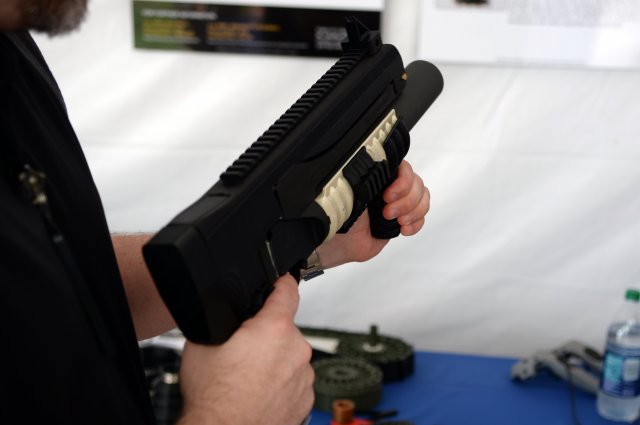 The US military has been using 3D printing for quite a while in all of its branches, and now in South Korea the Army is field testing 3D printed concepts through a newly established facility called Rapid Fabrication via Additive Manufacturing on the Battlefield, or RFAB. This is the fourth deployment of the $250,000 facility, but unlike other deployments that lasted only a month, this one will last an entire year, operated by a team of six soldiers.
The US military has been using 3D printing for quite a while in all of its branches, and now in South Korea the Army is field testing 3D printed concepts through a newly established facility called Rapid Fabrication via Additive Manufacturing on the Battlefield, or RFAB. This is the fourth deployment of the $250,000 facility, but unlike other deployments that lasted only a month, this one will last an entire year, operated by a team of six soldiers.
The Army chose South Korea as the newest location for the facility because of its near-deployment nature.
“We’re trying to validate the use of additive manufacturing in the future of the [Army],” said Chief Warrant Officer Dewey Adams.
The facility, which has five 3D printers, can quickly produce parts for tanks, trucks, rifles, and many other things the Army might need. While the parts produced by 3D printing may be small, the impact of the technology on the Army has the potential to be great. Some of the most critical parts have been extremely small, said Adams. For example, a fire suppression cap for a Mine-Resistant Ambush Protected vehicle costs only $2.51 – but it takes 126 days to ship from the United States, and if it is missing or broken, it can put the entire vehicle out of commission. 3D printing a replacement takes less than a day.
The Army isn’t just producing spare parts, either. It also 3D printed about 75 training mines and mortars. There are limits to the program, however; the 3D printed replacement parts are just temporary until permanent ones arrive, and the 3D printers in the RFAB can only produce plastic and some carbon-reinforced materials. The team also can’t 3D print parts that would cause serious harm if they were to fail, such as rifle firing pins or parts for helicopters. The program still does the Army plenty of good, however, with its quick turnaround times and ability to be transported from location to location.
“We want the asset as close to front line as we can,” said Adams.

James Zunino, a materials engineer with Armament Research Development and Engineering Center, at Picatinny Arsenal, N.J., discusses a 3-D printed grenade launcher during Lab Day, May 18, 2017, at the Pentagon. (Image: Sgt. Jose Torres)
So far, Adams’ unit has produced about 65 different parts and about 500 pieces of equipment in three months with a success rate of about 65 percent. Even failed parts are valuable, too, as they offer insight into the limits of the technology that can be used at the Army Armament Research, Development and Engineering Center (ARDEC) in Rock Island, Illinois.
Parts that succeed are also sent to ARDEC, where they are saved as blueprints to a military-wide data cloud that can be accessed by any branch – an ever-growing library of digital parts that can be downloaded and 3D printed instantly.

Zunino discusses 3-D printed parts for tracked robotic vehicles, during Lab Day, May 18, 2017, at the Pentagon. [Image: Sgt. Jose Torres]
“The only limitation is our imagination,” Adams said about the potential of 3D printing in the field.
Discuss this and other 3D printing topics at 3DPrintBoard.com or share your thoughts below.
Subscribe to Our Email Newsletter
Stay up-to-date on all the latest news from the 3D printing industry and receive information and offers from third party vendors.
You May Also Like
3D Printing Unpeeled: Biofuel Waste to Filament & Sustainable Photopolymers
I can’t ever remember a day with so many potentially high impact news stories have come out. In one story, we all know that there are problems with the safety...
Finnair Hires AM Craft to 3D Print Plastic Parts for Aircraft Interiors
Riga-based AM Craft, a supplier specialized in 3D printing aviation components and certified under EASA Part 21G, announced a significant achievement today. The company will assist in upgrading Finnair’s A320...
3DPOD Episode 198: High Speed Sintering with Neil Hopkinson, VP of AM at Stratasys
Neil Hopkinson, a pioneering 3D printing researcher, played a pivotal role in developing a body of research that is widely utilized today. He also invented High Speed Sintering (HSS), also...
3D Printing Webinar and Event Roundup: May 12, 2024
Webinars and events are picking up in the AM industry this week! ASTM International continues its Professional Certificate Course and Stratasys continues its advanced in-person trainings, while 3D Systems is...
































